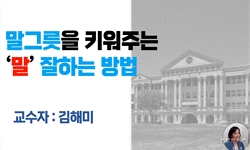이 연구는 코로나 팬데믹 시기, 2021년과 2022년 두 해에 걸쳐 진행된 온라인 수업과 온라인-오프라인 병행 초등학생 대상 문화예술교육 사례의 주요 의미를 정리하고 그 과정을 소개하는 내용...
http://chineseinput.net/에서 pinyin(병음)방식으로 중국어를 변환할 수 있습니다.
변환된 중국어를 복사하여 사용하시면 됩니다.
- 中文 을 입력하시려면 zhongwen을 입력하시고 space를누르시면됩니다.
- 北京 을 입력하시려면 beijing을 입력하시고 space를 누르시면 됩니다.
https://www.riss.kr/link?id=A109505604
- 저자
- 발행기관
- 학술지명
- 권호사항
-
발행연도
2024
-
작성언어
-
- 주제어
-
KDC
370
-
등재정보
KCI등재
-
자료형태
학술저널
-
수록면
1-28(28쪽)
- DOI식별코드
- 제공처
-
0
상세조회 -
0
다운로드
부가정보
국문 초록 (Abstract)
이 연구는 코로나 팬데믹 시기, 2021년과 2022년 두 해에 걸쳐 진행된 온라인 수업과 온라인-오프라인 병행 초등학생 대상 문화예술교육 사례의 주요 의미를 정리하고 그 과정을 소개하는 내용이다. 연구의 목적은 비대면 교육 환경 속에서 실행한 온라인, 온라인-오프라인 병행 내러티브 기반 문화예술교육이 학생들에게 정서적 안정감을 제공하고, 소통의 힘을 중심으로 사회적 자아와 시민의식을 형성하는 데 어떤 역할을 하는지, 그 과정의 의미를 탐구하는 것이다. 연구방법은 실행적 사례연구로, 지역사회의 이야기를 소재로 내러티브 기반 문화예술교육과정을 기획하여 실행하고, 교육과정 기획 및 실행을 담당한 강사들의 심층 인터뷰와 학생, 학부모의 경험을 통해 수집된 자료를 바탕으로 문화예술교육이 비대면 상황에서도 학습자에게 미친 교육적 효과를 분석하였다. 연구 결과 내러티브 기반의 문화예술교육은 학생들에게 사회적 자아와 협력을 통한 시민의식을 형성하는 데 기여하였으며, 다양한 예술 활동을 통해 정서적 안정을 제공하고 상호 소통의 기회를 확대하였다. 또한, 학습자들이 상징적 소재를 통해 자신의 이야기를 창조하고 표현함으로써, 팬데믹 상황 속에서도 정서적 안정, 자기표현과 소통, 관계 형성의 필요성을 충족할 수 있었음을 확인하였다. 본 연구는 향후 사회적 위기 상황에서도 지속 가능한 문화예술교육의 모델을 제시하고, 예술교육의 확대 가능성을 시사한다.
다국어 초록 (Multilingual Abstract)
Using an action-oriented case study method, the study implemented a curriculum centered on local community stories. Data were collected through in-depth interviews with instructors and the experiences of students and parents. Analysis revealed that narrative-based cultural arts education contributed to students' emotional stability, communication skills, and collaborative social awareness.
Through artistic activities such as storytelling, students expressed their ideas, created personal narratives using symbolic materials, and strengthened relationships despite pandemic-induced isolation. The programs demonstrated that cultural arts education fulfills essential needs for self-expression and interpersonal connection while fostering creativity and resilience in crisis situations. This study highlights the potential for sustainable cultural arts education models during societal disruptions, offering a framework for expanding arts education in diverse educational settings.
This study examines the significance and processes of narrative-based cultural arts education conducted for elementary school students during the COVID-19 pandemic in 2021 and 2022. The programs, delivered through online and hybrid online-offline form...
This study examines the significance and processes of narrative-based cultural arts education conducted for elementary school students during the COVID-19 pandemic in 2021 and 2022. The programs, delivered through online and hybrid online-offline formats, aimed to provide emotional stability and foster social identity and civic awareness in a non-face-to-face educational environment.
Using an action-oriented case study method, the study implemented a curriculum centered on local community stories. Data were collected through in-depth interviews with instructors and the experiences of students and parents. Analysis revealed that narrative-based cultural arts education contributed to students' emotional stability, communication skills, and collaborative social awareness.
Through artistic activities such as storytelling, students expressed their ideas, created personal narratives using symbolic materials, and strengthened relationships despite pandemic-induced isolation. The programs demonstrated that cultural arts education fulfills essential needs for self-expression and interpersonal connection while fostering creativity and resilience in crisis situations. This study highlights the potential for sustainable cultural arts education models during societal disruptions, offering a framework for expanding arts education in diverse educational settings.
목차 (Table of Contents)
- Ⅰ. 들어가며
- Ⅱ. 이론적 배경
- Ⅲ. 연구 방법
- Ⅳ. 실행 사례와 결과분석
- Ⅴ. 나가며
- Ⅰ. 들어가며
- Ⅱ. 이론적 배경
- Ⅲ. 연구 방법
- Ⅳ. 실행 사례와 결과분석
- Ⅴ. 나가며
- 참고문헌
동일학술지(권/호) 다른 논문
-
고등학교 시각장애 학습자의 음악적 자기결정성 제고를 위한 음악 비평 수업모형 개발 연구
- 한국문화교육학회
- 이보림(BoLim Lee)
- 2024
- KCI등재
-
- 한국문화교육학회
- 양지연(Ji Yeon Yang)
- 2024
- KCI등재
-
시대적 사고를 반영한 발터 벤야민의 예술론과 연극교육론
- 한국문화교육학회
- 이원현(Won-Hyeon Lee)
- 2024
- KCI등재
-
중장년층 성인학습자의 지역사회 디지털 크리에이터 아카데미 참여경험 연구
- 한국문화교육학회
- 조민경(Min-Gyeong Jo)
- 2024
- KCI등재
분석정보
연관 공개강의(KOCW)
-

How to Improve Your English Communication Skills: Speaking, Vocabulary and Grammar
한서대학교 Shaneil Dipasupil -

Engineering Diploma: Communication Skills
Teachers TV Teachers TV -

Special Schools: Communication Skills
Teachers TV Teachers TV -

Hair and Beauty Diploma: Communication Skills
Teachers TV Teachers TV -

말 그릇을 키우는 ‘말’ 잘하는 방법
남부대학교 김해미





 RISS
RISS 스콜라
스콜라

